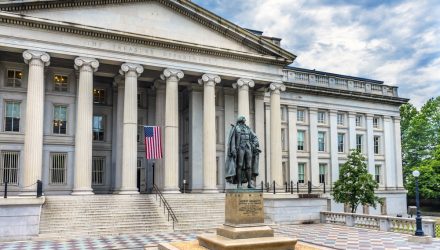With interest rates possibly at their peak, investors may want to consider longer-duration Treasury ETFs before the Fed begins cutting rates. After all, the U.S. 10-year Treasury note was yielding 4.017% as of midday Tuesday, up 50 basis points from a year ago. And that’s unlikely to last.
BondBloxx offers a suite of eight duration-specific U.S. Treasury ETFs that range in duration from six months to 20 years. They track a series of indexes that include duration-constrained subsets of U.S. Treasuries with more than $300 billion outstanding. They’re designed to track indexes that achieve target durations using U.S. Treasury securities instead of specific maturities or maturity ranges.
See more: “Short-Term Treasuries Continue to Yield Over 5%”
Go Long With XTEN & XTWY
Among the funds within the suite are the BondBloxx Bloomberg Ten Year Target Duration US Treasury ETF (XTEN) and the BondBloxx Bloomberg Twenty Year Target Duration US Treasury ETF (XTWY). As its name suggests, XTEN targets U.S. Treasury securities with an average duration of roughly 10 years. It carries an expense ratio of 0.08%.
XTWY, meanwhile, invests in Treasuries with an average duration of 20 years. It carries an expense ratio of 0.125%.
When BondBloxx launched these ETFs, Co-Founder Tony Kelly said they let investors “manage their duration exposure with precision.” He added: “At BondBloxx, we’re committed to building innovative fixed income tools for the markets of today and tomorrow. These new ETFs… are an exciting and potentially valuable addition to that investor toolkit.”
The issuer launched its first ETFs In February 2022. Now, it manages more than $2.5 billion in assets across 20 (soon to be 21) U.S.-listed ETFs. Its AUM has grown rapidly in large part because of high demand for its Treasury ETFs.
BondBloxx Co-Founder Joanna Gallegos said that Treasuries have been a great alternative to cash. They’re also a great way to capture as much yield as possible.
“It’s hard to walk away from a 5% risk-free yield,” she added.
For more news, information, and analysis, visit the US Treasuries & TIPS Fixed Income Channel.

